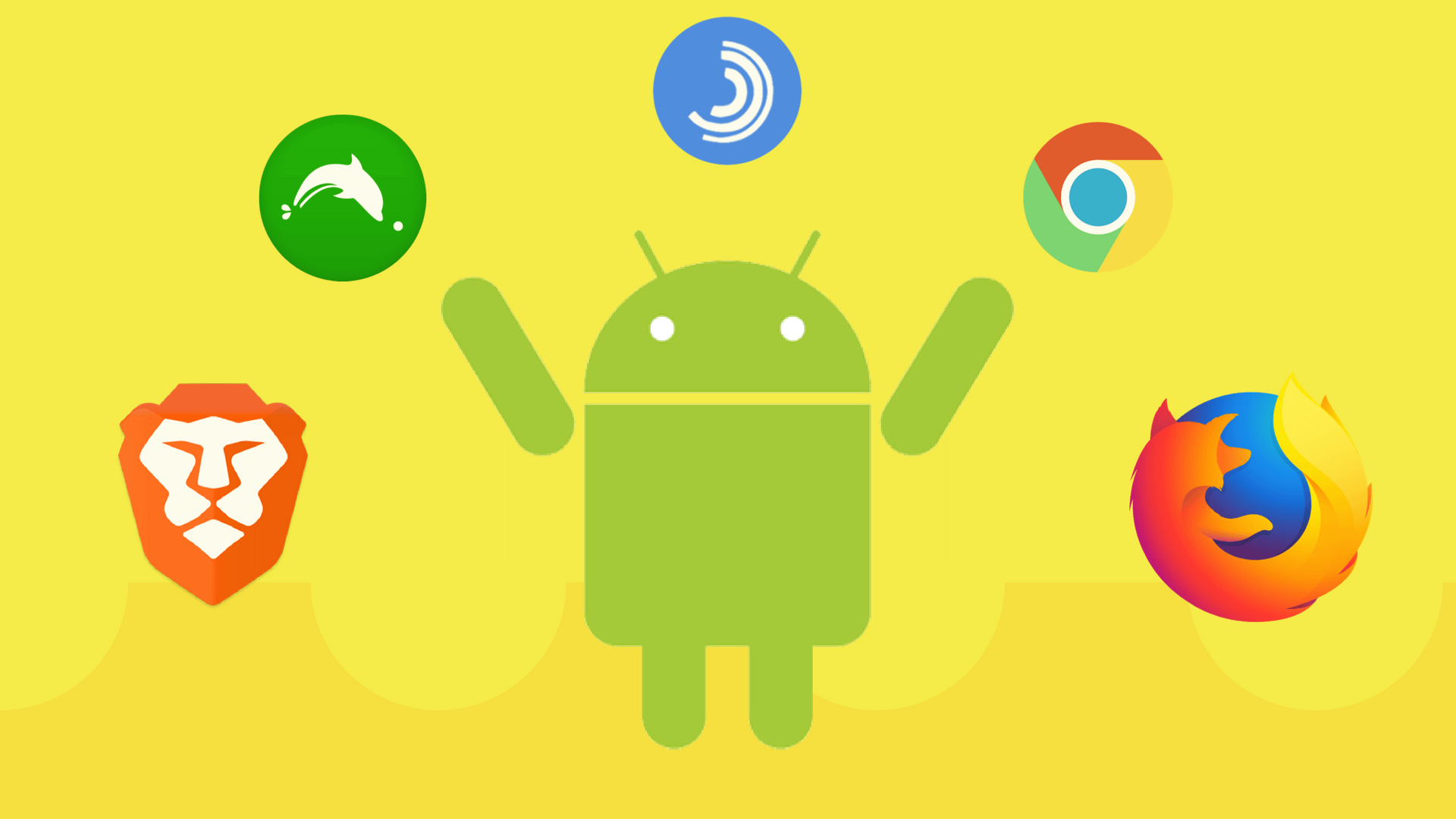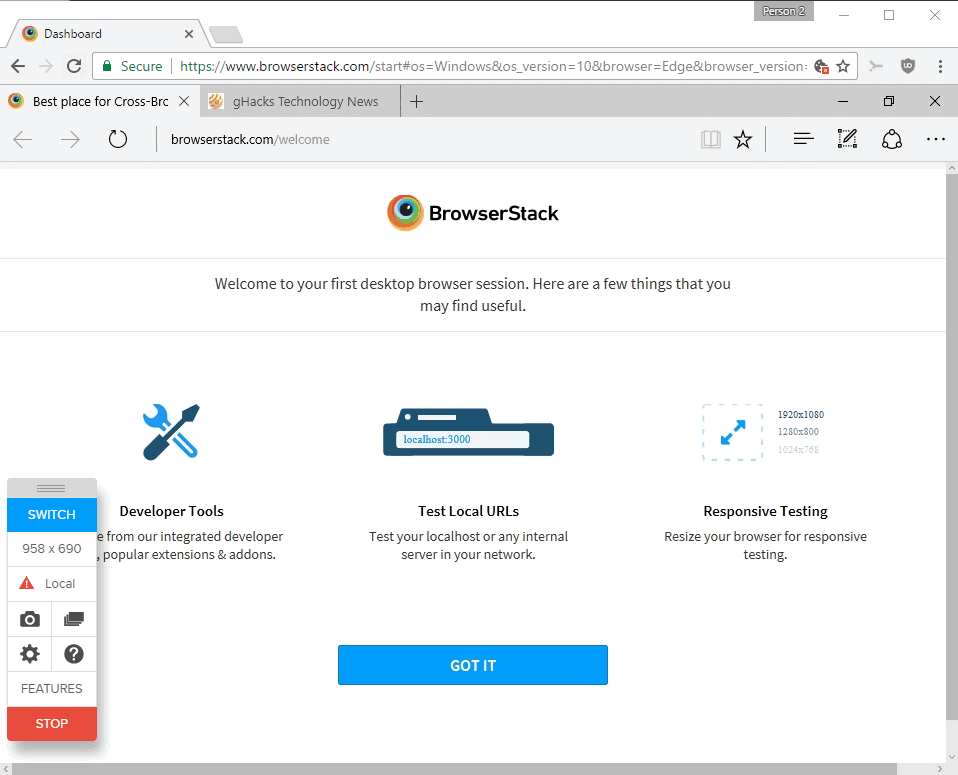

- #Free browser stack how to
- #Free browser stack for mac
- #Free browser stack install
- #Free browser stack manual
- #Free browser stack software
#Free browser stack for mac
Apple advertised it was “up to twice as fast” as Internet Explorer 7, and up to 1.6x the performance of Mozilla Firefox 2 (both supposedly tested on a Intel Core 2 Duo system with Windows XP and 1GB of RAM).Īpple continued to release new Safari versions for Mac and Windows, but when Safari 6.0 was released as part of Mac OS X Mountain Lion in 2012, a Windows version was missing.

#Free browser stack software
The result was an application that worked, but didn’t match the design or expected functionality of its host operating system.ĭespite the early security issues and questionable software architecture, Safari for Windows was a decent web browser. Apple used the same (awful) compatibility layer from iTunes for Windows with the Safari port, which re-implemented the Cocoa UI, Core Foundation, Core Graphics libraries on top of Windows - similar to using Wine to run Windows programs on Linux. Safari also felt out of place on Windows. The initial release included a security vulnerability for arbitrary code execution, which was patched less than 48 hours later as Safari 3.0.1. However, the Windows version wasn’t all that great. The first version for Windows, Safari 3.0, was released that same year. The browser was initially exclusive to Mac, but when the first iPhone arrived in 2007, it also included Safari. Even though the web browser was new, the technology powering it was not - Apple used the KHTML rendering engine as a starting point to create Safari’s WebKit engine. Apple discontinued the Windows version of Safari many years ago, but bringing it back now could provide one of the best alternatives to browsers built with Google’s Chromium engine.Īpple released the first version of the Safari web browser in January 2003, as part of Mac OS X 10.3 ‘Panther’, following the end of Microsoft’s five-year deal with Apple to keep Internet Explorer as the default web browser on Mac. You might recall that the Safari web browser used to be available for Microsoft Windows, in addition to macOS (then known as Mac OS X) and later iPhone and iPad.
#Free browser stack how to
There have been many ideas for how to keep Google’s power in check, but here’s mine: Apple should make its Safari web browser cross-platform again. Google has also become more dominant in that time, and has occasionally used its position in the web ecosystem and browser market in harmful ways. The web has changed drastically over the past decade: web apps have become more common, algorithms now dictate how most people receive content, and billions more people are now connected globally. The rest it pretty much irrelevant for the average site. Looking though the list, only the missing video codec support is a bummer. But the areas affected are basically due to proprietary things or the missing browser chrome and OS integration around it: Giving it a spin on tells me that it trails Safari by quite a bit (492 vs 416 points). The wk parameter indicating that you wanna use WebKit.

Then you run it like this: npx playwright wk

Playwright is basically what Puppeteer is for Chrome, but for Chrome, Firefox and Safari at the same time. The automated way is to use " Playwright".
#Free browser stack manual
Afterwards you run MiniBrowser.exe and should be greeted with a spartan browser window.īut you probably don't wanna jump through the hoops of manual installation, especially not each and everytime you need to upgrade WebKit.
#Free browser stack install
The only update from my side would be to not install Cygwin and Apple iTunes, as both are monsters, but instead to download the so-called "WebkitForWindows WebKitRequirements" as ZIP and to put the content of their bin64 folder into the one with the same name of your WebKit-Cairo folder. There are two ways to do so: a manual and an automated one.Īlexander Skachkov was kind enough to describe all required steps of the manual way in a blog post three years ago. But it is still perfectly possible to get WebKit on Windows to start, with almost all the engine features of the newest Safari. It's just that Apple didn't want to invest anymore time in providing a browser UI around it. Since then debugging things in WebKit came down to either buying a whole Mac or using a remote Safari in Browserstack.įunnily enough, the WebKit team kept pumping out nightly builds for Windows together with those for the other platforms. Safari 5.1, back in 2010, was the last WebKit browser that somebody released for the Windows platform.


 0 kommentar(er)
0 kommentar(er)
